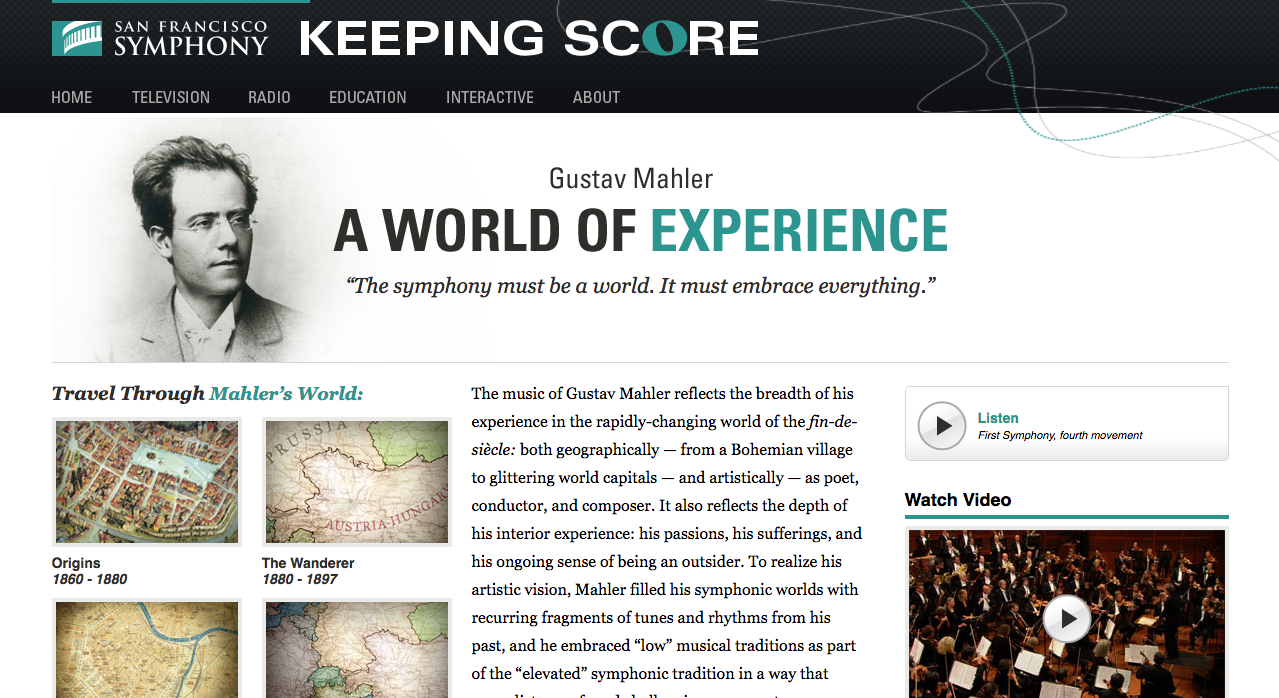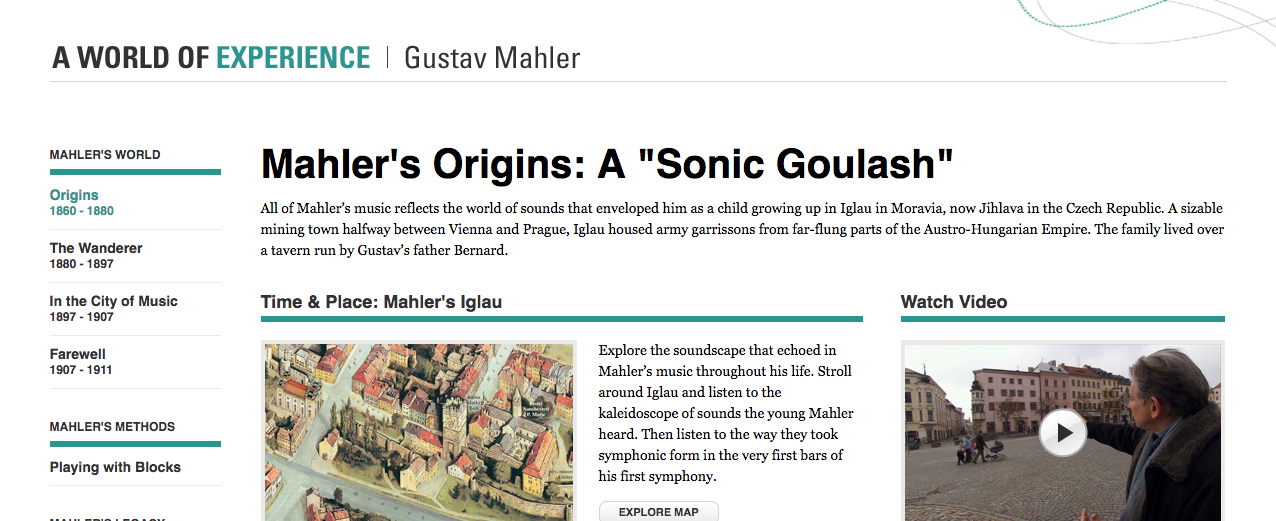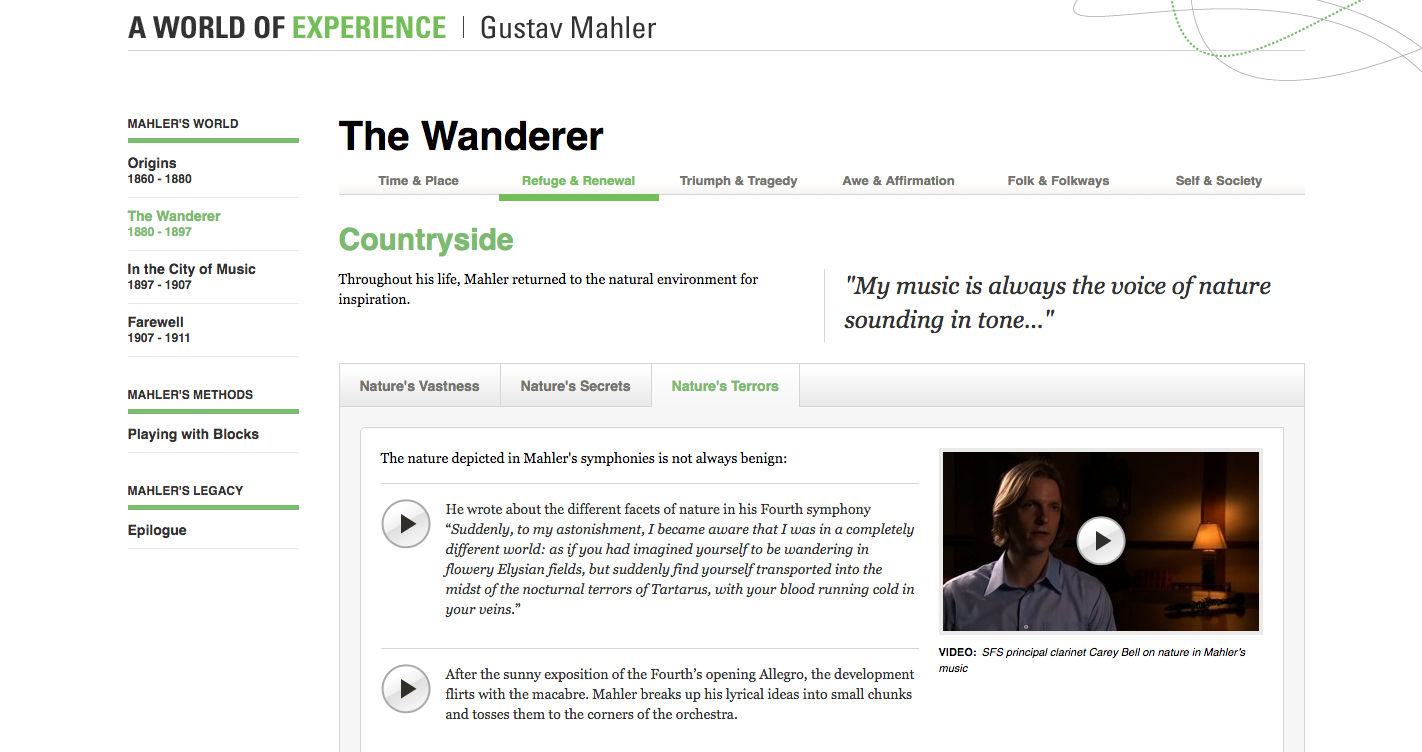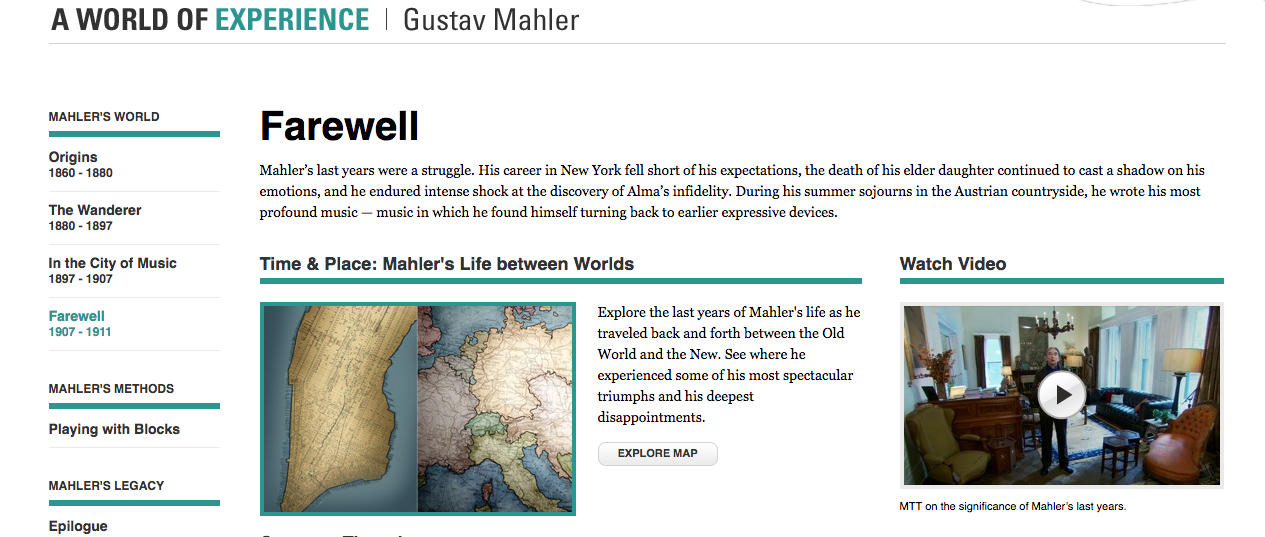Special Topic: The Music of Gustav Mahler
Class 1
Why Listen to Mahler?
|
|
|
A Brief History of the Austro-Germanic Symphony..
Typical Classical Symphony Structure (as of the 1770's)
This precedent informed all following symphonic works, both classical, romantic and modern.
First movement (fast tempo): Sonata-allegro form, with at least two themes of substance (the second in a contrasting key) in an opening exposition section; a development section stressing motivic manipulation in addition to the tonal contrast characteristics of this section since its inception; and a recapitulation of the themes of the opening section, this time all in the original tonality.
Second movement (slow): Variation, part form, sonata-allegro or sonatina form. Instrumentation was sometimes reduced to strings, with woodwinds and minimal brass noted in some movements.
Third movement (moderately fast); Minuet and trio. The trio frequently featured solo woodwinds and strings, with little brass support. The minuet was evolving more into a developmental form, especially in the contrasting middle section of the minuet proper.
Fourth movement (quite fast): Rondo, sonata-rondo, sonata-allegro forms used. The movement lacked some of the formal complexity and development ingenuity of the first movement, this a continuation of the simpler and more dancelike spirit of the final movements of the early symphony.
(excerpt from "The Symphony" by Preston Stedman. Prentice Hall, New Jersey; 1992.)
This precedent informed all following symphonic works, both classical, romantic and modern.
First movement (fast tempo): Sonata-allegro form, with at least two themes of substance (the second in a contrasting key) in an opening exposition section; a development section stressing motivic manipulation in addition to the tonal contrast characteristics of this section since its inception; and a recapitulation of the themes of the opening section, this time all in the original tonality.
Second movement (slow): Variation, part form, sonata-allegro or sonatina form. Instrumentation was sometimes reduced to strings, with woodwinds and minimal brass noted in some movements.
Third movement (moderately fast); Minuet and trio. The trio frequently featured solo woodwinds and strings, with little brass support. The minuet was evolving more into a developmental form, especially in the contrasting middle section of the minuet proper.
Fourth movement (quite fast): Rondo, sonata-rondo, sonata-allegro forms used. The movement lacked some of the formal complexity and development ingenuity of the first movement, this a continuation of the simpler and more dancelike spirit of the final movements of the early symphony.
(excerpt from "The Symphony" by Preston Stedman. Prentice Hall, New Jersey; 1992.)
|
Examples of the Classical Symphony
|
Examples of the Romantic & Post-Romantic Symphony
|
|
1772: Haydn's "Farewell" Symphony
1773: young Mozart's Symphony No. 25
1788: Mozart's last, "Jupiter" Symphony, No. 41
1800: Beethoven's Symphony No. 1
|
1804: Beethoven's "Eroica" Symphony No. 3 - First "Romantic" Symphony
1805: Beethoven Symphony No. 5
1812: Beethoven Symphony No. 7
1817: Beethoven's Ninth Symphony - shatters the mold. Written while he was completely deaf.
|
1822: Schubert's "Unfinished" Symphony - only 2 movements.
1876: Brahms Symphony No. 1 - took 20 years to write because the "shadow" of Beethoven loomed so large.
1885: Brahms' last symphony, Symphony No. 4
1888: Mahler's Symphony No. 1
|
*Remember to fill out your Class 1 Exit Ticket on Google Classroom!
Classes 2-3
Mahler's Origins
View Keeping Score: Mahler's Origins 0:00 - 16:00
Mahler's First Symphony as a model
View Movement 1 (above)
View Movement 1 (above)
Movement II: View Keeping Score: Mahler's Origins (26:30-30:32)
Movement III: View Keeping Score: Mahler's Origins (30:32-41:16)
Young Mahler & the completion of his First Symphony: View Keeping Score: Mahler's Origins (41:16-56:30)
Mahler's Fourth Symphony (early-mid career)
*Remember to fill out your Class 2 & 3 Exit Tickets on Google Classroom!
Class 4
Mahler's Legacy
- The Good Years: 1902-1906 View Keeping Score: Mahler's Legacy (17:36-22:00)
- The Tragic Years: 1907 - 1911 View Keeping Score: Mahler's Legacy (28:00-30:00)
- Song of the Earth & the Ninth Symphony View Keeping Score: Mahler's Legacy (33:50-37:27)
*Remember to fill out your Class 4 Exit Ticket on Google Classroom!
Classes 5-6
Mahler's Ninth Symphony
|
|
|
*Remember to fill out your Class 5 & 6 Exit Tickets on Google Classroom!
5/2017






